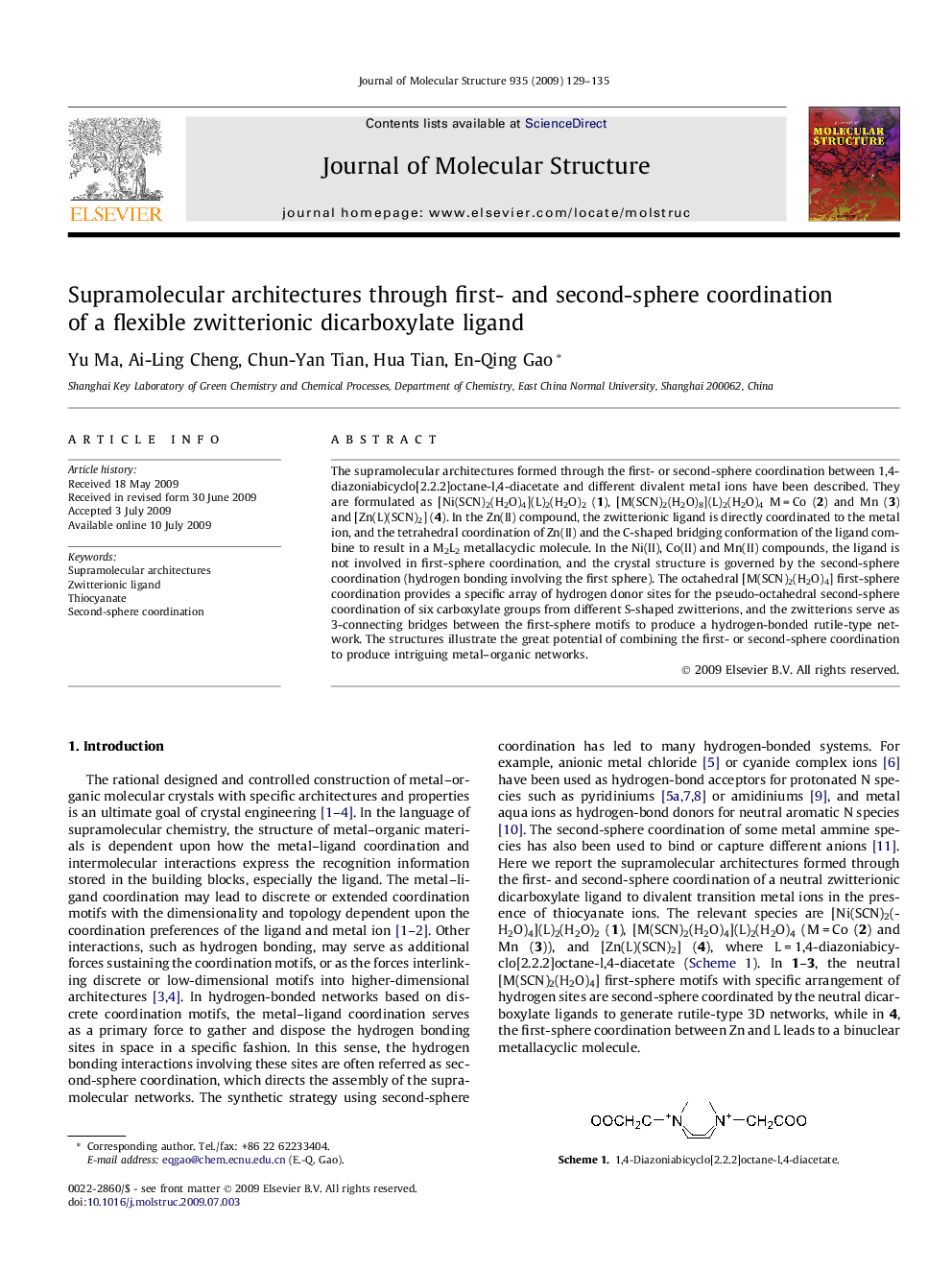| کد مقاله | کد نشریه | سال انتشار | مقاله انگلیسی | نسخه تمام متن |
|---|---|---|---|---|
| 1404067 | 1501855 | 2009 | 7 صفحه PDF | دانلود رایگان |

The supramolecular architectures formed through the first- or second-sphere coordination between 1,4-diazoniabicyclo[2.2.2]octane-l,4-diacetate and different divalent metal ions have been described. They are formulated as [Ni(SCN)2(H2O)4](L)2(H2O)2 (1), [M(SCN)2(H2O)8](L)2(H2O)4 M = Co (2) and Mn (3) and [Zn(L)(SCN)2] (4). In the Zn(II) compound, the zwitterionic ligand is directly coordinated to the metal ion, and the tetrahedral coordination of Zn(II) and the C-shaped bridging conformation of the ligand combine to result in a M2L2 metallacyclic molecule. In the Ni(II), Co(II) and Mn(II) compounds, the ligand is not involved in first-sphere coordination, and the crystal structure is governed by the second-sphere coordination (hydrogen bonding involving the first sphere). The octahedral [M(SCN)2(H2O)4] first-sphere coordination provides a specific array of hydrogen donor sites for the pseudo-octahedral second-sphere coordination of six carboxylate groups from different S-shaped zwitterions, and the zwitterions serve as 3-connecting bridges between the first-sphere motifs to produce a hydrogen-bonded rutile-type network. The structures illustrate the great potential of combining the first- or second-sphere coordination to produce intriguing metal–organic networks.
Journal: Journal of Molecular Structure - Volume 935, Issues 1–3, 29 October 2009, Pages 129–135